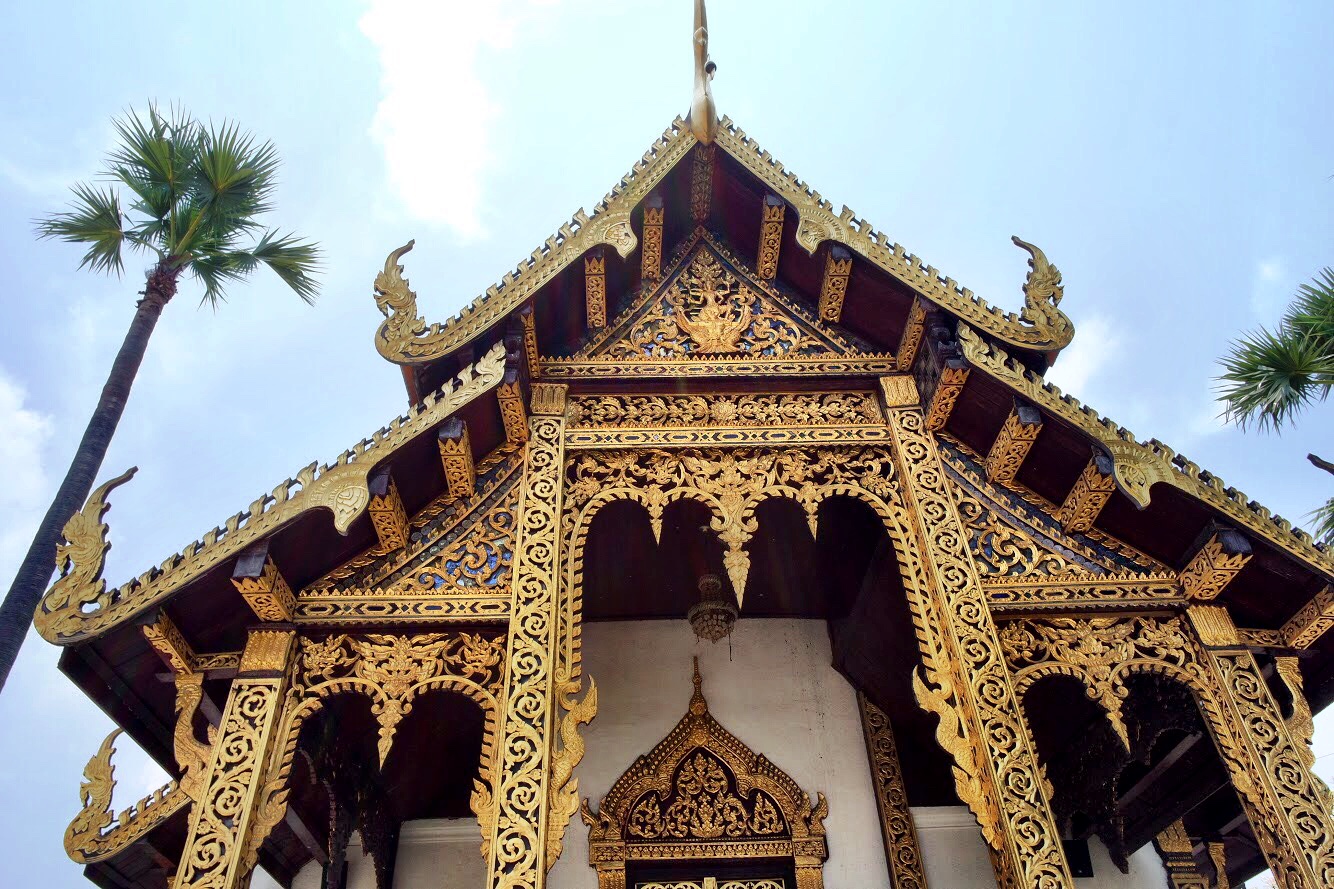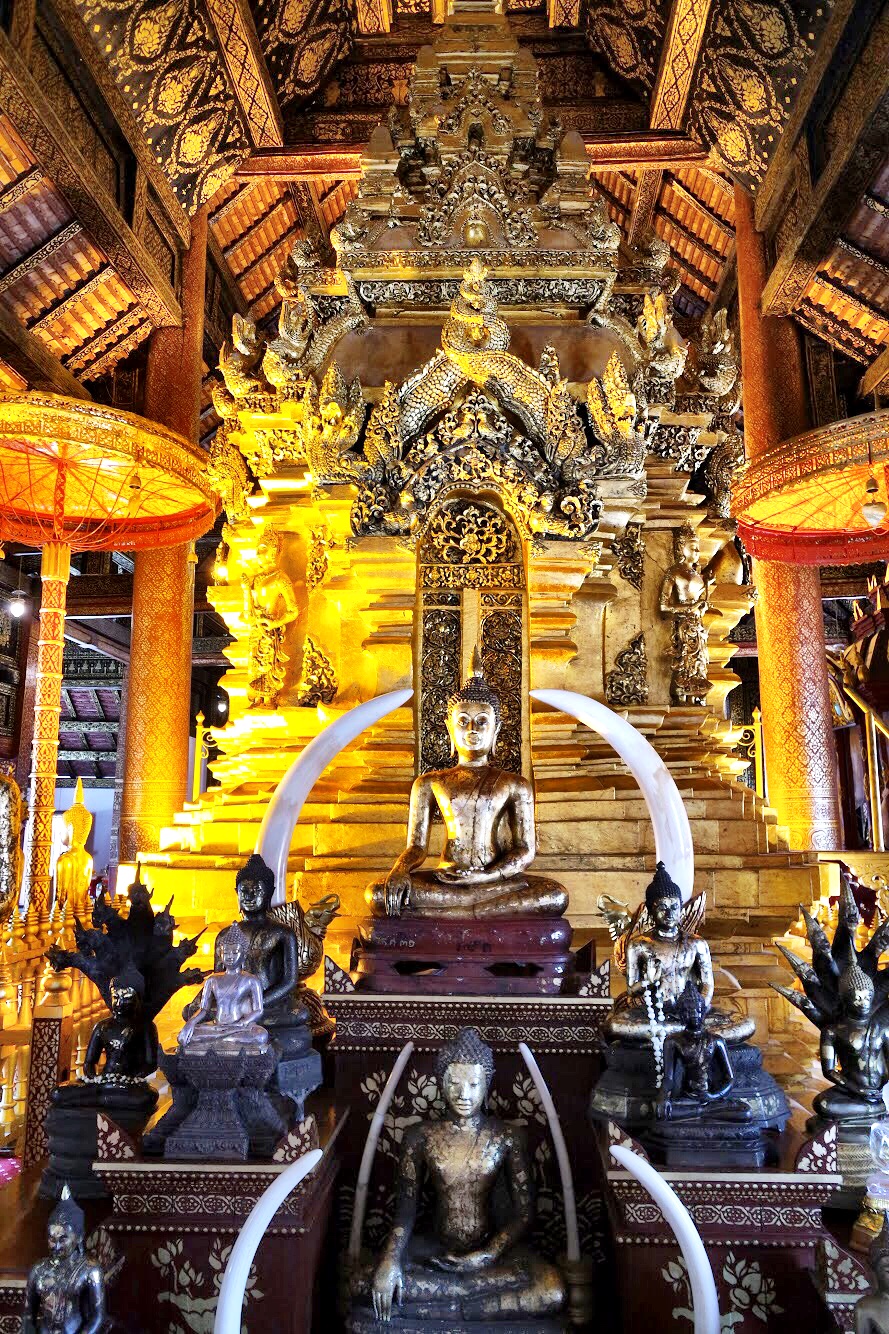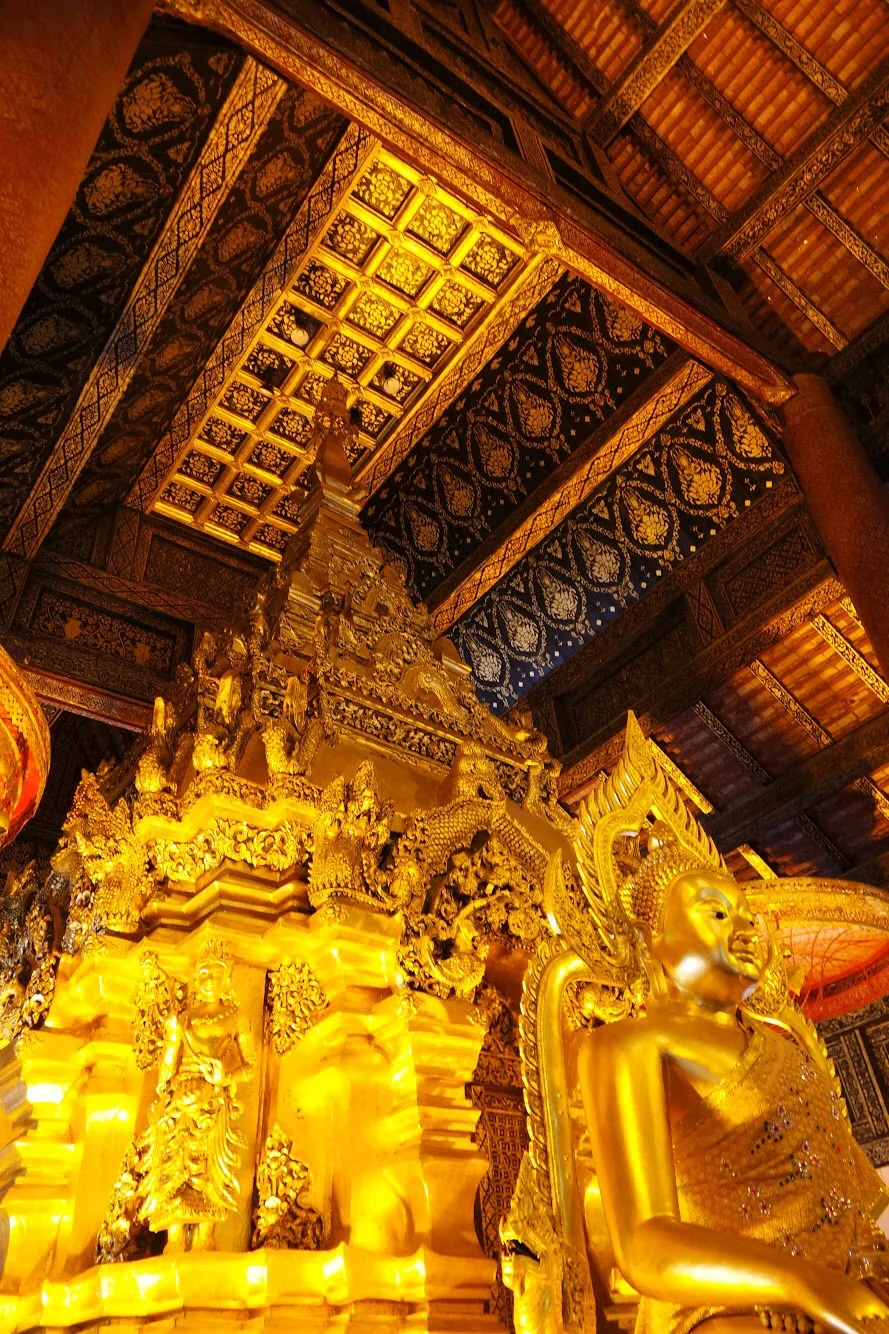A Thai Buddhist temple dedicated to those born in the Year of the Rat at the base of Doi Inthanon known for its free meditation courses.
Wat Phra That Si Chom Thong houses a holy relic: fragments of the Buddha’s skull
En route to Doi Inthanon to see its waterfalls and soaring modern pagodas, our driver Tommy asked us if we wanted to stop at a temple at the base of the mountain.
The wat he wanted to share with us is about an hour and a half from Chiang Mai and is dedicated to those born in the Year of the Rat.
“That’s my sign,” I told Tommy, excited about that fact for the first time in my life.
“That’s lucky!” he exclaimed.
“The temple is one of the most revered in all of Northern Thailand because it supposedly holds bits of the right side of the Buddha’s skull. ”
The temple is dedicated to those born in the Year of the Rat — like this fancy fellow
Learn More About the Chinese and Thai Zodiac
The names of Thai temples tend to be mouthfuls. This wat, Phra That Si Chom Thong Woraviharn, is no exception.
This misshapen statue is supposed to be of a lion
Holy Skull Fragments
It was built in the mid-1400s atop a hill, Doi Chom Thong, which the Buddha is said to have visited. In fact, he supposedly even stated that the site would one day be home to one of his holy relics.
This small shrine, or mondop, is where the holy relic of Chom Thong is kept
That prediction came true, and the wat is one of the most revered in all of Northern Thailand because it supposedly holds bits of the right side of the Buddha’s skull. The relic was found in 1452 and is described as being smooth and the size “of jujube seeds” and the off-white color of “dried medlar flowers.”
At most Buddhist temples, relics are stored in chedis like these — but not at this one
The oldest structure at the wat is the golden chedi. What’s interesting is that the pagodas known as chedis don’t house the relics as at most Thai temples. Instead, they’re stored within a mondop, a small temple-like shrine framed by tall thin columns.
The Buddha’s skull fragments are taken out of the mondop on important Buddhist holidays for devotees to pay homage to them.
The viharn is the main building on site
The focal point of the assembly hall features numerous Buddhas, elephant tusks and an elaborately carved centerpiece
Visiting the Viharn
The main building on the wat grounds is the Lanna-style viharn, which contains gorgeous wood carvings. The statues, many of which are gold or are covered in gold leaf, the teak beams, the intricately carved shrine, the light diffused through the bright orange umbrellas, which symbolize enlightenment and are compared to halos in the Christian tradition — they all lend the space a warm, intense glow.
It’s not unusual for viharns to have multiple statues of the Buddha
Some of the statues are covered in gold leaf
Look up — even the teak ceiling is elaborately painted
Walk around the altarpiece — it’s so elaborate it should be seen from every angle
On our way out of the wat, Duke and I stopped by a vendor’s table near the entrance to buy a small ceramic rat to put in the shrine in our bedroom.
We found a garage-like building out back with this strange contraption
The temple is also home to the Insight Meditation Center, founded in 1991 by Phra Dhammungkalajarn Vi (aka Phra Ajaan Tong Sirimangalo). Our chauffeur Tommy proudly informed us that his cousin is the director of the meditation center. If you’re in no hurry and are intrigued by, or already a practitioner of meditation, here’s more information about this fascinating option.
Those staying at the meditation retreat wear white
Q&A About the Insight Meditation Center at Chom Tong
Where’s the meditation center located?
Behind the main temple. Look for the CMQ Lanna International Library.
What happens at the meditation retreat?
Students receive individual instruction in vipassana meditation. Your guide will educate you in an intensive form of a technique developed by Mahasi Sayadaw, a Burmese monk, with sequences of mindful prostrations, walking and sitting meditation following the teachings of Ajaan Tong Sirimangalo, a local monk.
Exercises are led in English and Thai, and work to apply mindfulness to the body, feelings, mind and “mind-objects,” known as the Satipatthana, the Four Foundations of Mindfulness.
“The Four Foundations of Mindfulness are a device that stops evil, stops bad deeds, stops defilement. … We will have pure hearts always. ”
What is vipassana meditation?
Vipassana is a word from Pali (the classic language of Theravada Buddhism) that means seeing clearly or seeing through. It’s often translated as “insight,” and practitioners of vipassana meditation attempt to see through the true nature of reality.
Vipassana strives for a clear awareness of exactly what is happening as it happens. Practitioners bring their minds to rest, focusing on only one item and not allowing them to wander. When this is accomplished, a deep calm pervades the body and mind. It’s also described as using concentration as a tool by which your awareness can chip away at the wall of illusion that cuts us off from the living light of reality so you can see the impermanence, unsatisfactoriness and selflessness of physical phenomena.
It takes years to master, but one day the meditator is said to chisel through that wall and tumble into the presence of light. This transformation is called liberation and is permanent.
The vipassana meditation technique was developed by a couple of Buddhist monks
Umbrellas, like the one in the viharn, symbolize enlightenment
Why should I go?
There have been studies recently that show the benefits of meditation in reducing everything from anxiety to depression to pain.
“Why should we be mindful?” asks Sirimangalo, who still teaches at Chom Thong. “The Four Foundations of Mindfulness are a device that stops evil, stops bad deeds, stops defilement. … during the time when we are mindful, evil won’t enter in to reach our hearts. We will have pure hearts always. It is like dark and shining light. Mindfulness is a shining light; all defilements, all evil states, are like darkness. When the bright light shines, the darkness disappears. For this reason, we should be mindful at all times — our mind will be bright, clean and peaceful all of the time.”
How do I go about reserving space at the retreat?
Make a reservation in advance — otherwise they can’t guarantee that space will be available. They ask that people arrive around 1 p.m. You can email the International Department at reservationchomtong@yahoo.com.
What’s the dress code?
The retreat is affiliated with the wat (temple) and follows their rules of modesty. Men can wear T-shirts, but tank tops and sweats aren’t allowed. Shorts should cover the knees. For women, shirts should cover their shoulders, not expose their chests and should be at least elbow-length. Skirts or pants should reach the ankles. They also would like you to limit your makeup and perfume use.
That being said, while you’re at the retreat, they ask that you wear white clothing that fits their sense of decorum. You can bring your own, borrow some from the center or buy some at vendors just off the temple grounds.
In the winter, especially December and January, it can get quite cold. You’ll want a sweatshirt or jacket and socks if you visit then.
What should I bring?
- Toiletries, including toothpaste and soap
- Toilet paper
- Passport
- Digital alarm clock and/or timer
- Flashlight
- Flip-flops or sandals
- Water bottle
- Insect repellent
How long will the course be?
While you’re welcome to stay for as long or as short as you like, they recommend 21 days for the basic course. Once you’ve taken that, you can do a 10-day retreat. No previous experience with meditation is necessary and all courses are individual, so they start the day you arrive. Keep in mind that if they’re fully booked, those who are staying longer are given preference.
On your first day, you’ll be given an introduction to the course and will meet with your teacher.
How much will this cost me?
Nothing — though the organization does run on donations, in line with the Buddhist principle of dana (generosity). Donations to the center help pay for electricity, water and general maintenance. Donations to the teachers cover their living expenses, as they’re all volunteers and don’t make a salary. Donations for food pay for the two meals a day prepared by nuns in the temple. –Wally
Rats! You’ll see lots of depictions of them at Wat Chom Thong
Wat Phra That Si Chom Thong Worawihan
Ban Luang
Chom Thong District
Chiang Mai 50160, Thailand




































